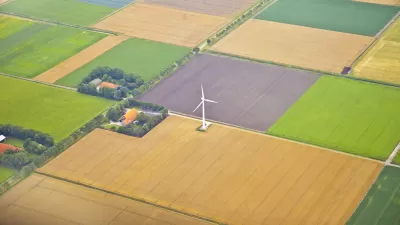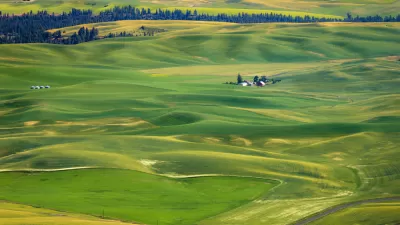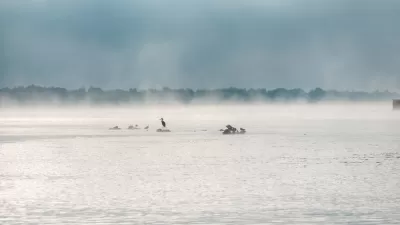A shake-up at the U.S. Department of Agriculture will likely impact the delivery of support and programs from the federal government to rural communities.

Dan Nosowitz shares news of changes at the U.S. Department of Agriculture (USDA) likely to impact federal support for rural communities.
Nosowitz reports that USDA Secretary Sonny Perdue recently abolished the position of Under Secretary of Rural Development—a position that oversees the Office of Rural Development and its $216 billion budget.
In the place of the Under Secretary of Rural Development, the "heads of four departments within the Rural Development agency—the Rural Utilities Service, the Rural Business Service, the Rural Housing Service, and the Chief Risk Office—will report directly to [the USDA Secretary]," according to Nosowitz.
The USDA called this reorganization an elevation of rural development, but the advocacy group Campaign for Renewed Rural Development has written a letter to members of Congress [pdf] stating their strong opposition to the reorganization. Here's a summary of the main arguments od that letter's opposition to the reorganization:
- "In its current position as a core USDA Mission Area overseen by an Under Secretary, RD is part of the USDA subcabinet; the reassignment would remove it from the subcabinet and rescind the decision-making power that comes with being a core USDA Mission Area."
- "Under Secretaries are confirmed by the U.S. Senate and held directly accountable to Congress for their office, scope and mission – special assistants are not."
- "Demoting RD and removing Congressional accountability will have a direct impact on our nation’s ability to care for the underserved and compete in a global market."
The letter also raises alarms about possible policy and budget developments that could further impact rural communities: "President Trump’s 'skinny budget' proposal to Congress included the elimination of the Community Development Block Grant (CDBG) program, the entire portfolio of Rural Business Cooperative Service programs and the Rural Water Wastewater Program."
FULL STORY: Farm Advocates Fear USDA Is Destroying Aid To Rural America

Planetizen Federal Action Tracker
A weekly monitor of how Trump’s orders and actions are impacting planners and planning in America.

DARTSpace Platform Streamlines Dallas TOD Application Process
The Dallas transit agency hopes a shorter permitting timeline will boost transit-oriented development around rail stations.

Four Reasons Urban Planners Can’t Ignore AI
It’s no longer a question of whether AI will shape planning, but how. That how is up to us.

Bikeshare for the Win: Team Pedals to London Cricket Match, Beats Rivals Stuck in Traffic
While their opponents sat in gridlock, England's national cricket team hopped Lime bikes, riding to a 3-0 victory.

Amtrak’s Borealis Exceeds First Year Ridership Expectations
205,800 passengers have boarded the St. Paul to Chicago line, well above initial MDOT projections.

Study: 4% of Truckers Lack a Valid Commercial License
Over 56% of inspected trucks had other violations.
Urban Design for Planners 1: Software Tools
This six-course series explores essential urban design concepts using open source software and equips planners with the tools they need to participate fully in the urban design process.
Planning for Universal Design
Learn the tools for implementing Universal Design in planning regulations.
City of Mt Shasta
City of Camden Redevelopment Agency
City of Astoria
Transportation Research & Education Center (TREC) at Portland State University
US High Speed Rail Association
City of Camden Redevelopment Agency
Municipality of Princeton (NJ)




























